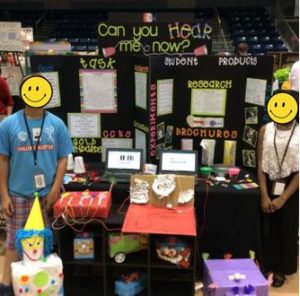By: Holley Burford
It is no secret that student’s in today’s increasingly complex world need to be equipped with a vast range of skills to enter the workforce. Many are learning and preparing for jobs that have not even been created yet. To help our students be prepared, teachers need to look at how they learn best.
One way to engage our students and empower them to build 21st-century skills is through hands-on project-based learning (PBL). Students can problem solve while working together to create different ideas on how to achieve a goal. PBL gives them an opportunity to work through the four C’s of 21st-century learning (Collaboration, Communication, Critical Thinking, and Creativity) which is necessary for success in the 21st century.
This past spring I was looking for a great way to teach my students about sound waves and electric circuits. Our school system had recently provided our teachers with memberships to a web-based curriculum resource, Defined STEM, which provides K-12 teachers with a library of career-focused projects. I was very impressed with the authentic content and the easy-to-navigate platform. The site gives teachers the information and tools that they need to successfully teach their students about a topic while covering many different subjects and standards. The tasks are editable so I can personalize them to fit the needs of my students and meet the standards I want.
After looking through the performance tasks, I decided on the task of Audiologist. This lesson would be a great refresher on what my class learned about the human body and I would be able to add in the new standards that needed to be covered. For this task, the students had to take on the role of a team of Audiologists that were going into a preschool to teach young children about their ears and how to take care of them. For students to achieve this goal they had to complete several different products.
Here are the 5 steps my students took to complete this project:
- To start the project, the students had to do research on the ear and learn how sound travels to our brain. Students took this information that they gathered and created paper ear models that they could use to show the preschoolers how the sound traveled.
- Next, students completed three different sound experiments to demonstrate how sound traveled. Once they worked through the three different experiments they had to choose which one they wanted to use in their presentation.
- Then, students did research on how to keep their ears healthy and safe. When they had this information, students created a brochure that could be given to the preschoolers to take home to share with their families.
- After completing the research, students had to create a toy that could be used by an Audiologist to test the hearing in a small child. The toy had to be appealing to young children and had to make a sound. Students worked through the Engineering Design process to create their toys using only the material provided. They were given various art supplies and they had to incorporate some sort of technology (Makey Makey, Little Bits, or Snap Circuits).
- Finally, students took their products and presented them to each other. Two students were selected to present at the STEAM showcase that our district has each year.

Throughout the whole process of working through this task, I was amazed at the learning that was taking place with my students. They were constantly engaged in what they were doing and worked together to problem solve without me telling them what to do each step of the way. This is where true learning takes place. Students can take ownership in what they are doing and apply it to the real world, which makes their learning more meaningful.
Holley Burford has been teaching for 7 years and has undergraduate degrees in Early Childhood/Elementary and a master’s degree in Early Childhood Education. Currently, Holley is a 4th-grade teacher at Stemley Road Elementary in Talladega County. She integrates STEM/STEAM lessons as much as possible to help students learn through hands-on activities.
Follow Holley on Twitter: @hburford11